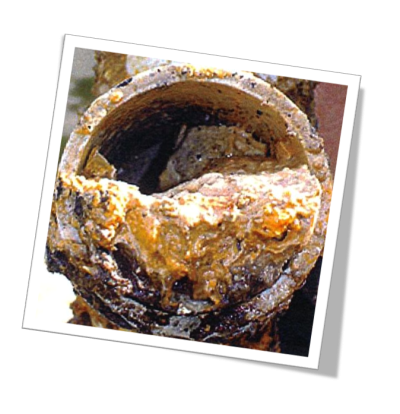
Fats, oils and grease, known collectively as FOG, represent the most serious enemy of our sewer lines. FOG poured down kitchen drains accumulates inside sewer pipes. As the FOG builds up, it restricts the flow in the pipe and can cause untreated wastewater to back up into homes and businesses, resulting in high costs for cleanup and restoration.
Important! When sewer pipes back up on private property, the
homeowner or business owner is responsible for the cleanup.
Tips for Homeowners: Can it. Cool it. Throw it away.
- Can the grease! Keep an empty metal can and pour oil and grease into the can. Allow grease to cool in the container before throwing it in the trash.
- Wipe before washing. For greasy pans, pour the grease into a container and use a paper towel to wipe out the remaining grease in the pan prior to washing.
- Seal the oil. Liquid should be limited to no more than one-half gallon. Mix liquid vegetable oil with an absorbent material such as kitty litter or coffee grounds in a sealable container before throwing it in the trash.
- Keep drains clean by pouring 1/2 cup of baking soda down the drain followed by 1/2 cup of white vinegar. Wait 10-15 minutes and then rinse with hot water.
- Don’t pour fat, oil or grease down drains or garbage disposals.
- Don’t use hot water to rinse grease off cookware, utensils, dishes or surfaces.
Tips for Businesses Managing FOG
- Strain or filter oil in deep fryers to extend the life of the cooking oil.
- Control the temperature of deep fryers to prevent oil from scorching and extend its life. Less oil in the grease interceptor means money saved in pumping and in new oil purchased.
- Recycle cooking oils and leftover grease into a storage container such as a barrel or bucket. Remember that grease is valuable — grease and oil can be recycled into other useful products. See your Yellow Pages for “grease traps” or “greases” to find grease collection companies or grease trap service providers.
- Instruct staff to be conservative about the use of FOG in food preparation.
- Don’t use your garbage disposal to grind up FOG and flush it down the drain.
- Use dry cleanup methods to reduce water consumption and save money! Remove FOG and food waste from pans by scraping or wiping before using water. Use rubber scrapers to remove FOG from cookware.
- Use absorbent paper to soak up FOG under fryer baskets.
- Use paper towels to wipe down work areas. Cloth towels will accumulate grease that will eventually end up in your drains when washing.
- Minimize the use of dish soap in dishwashing operations. Dish soap emulsifies FOG and enables it to pass through a grease interceptor. It will later coagulate in sewer lines.
- Maintain your grease trap. Many restaurants have a grease trap installed in the kitchen. In order to keep your grease trap working properly, you’ll need to have it cleaned periodically, according to the manufacturer’s specifications.
Directions
Address
Public Utilities
453 Lpga Boulevard
Holly Hill, FL 32117
United States
View in Google Maps
